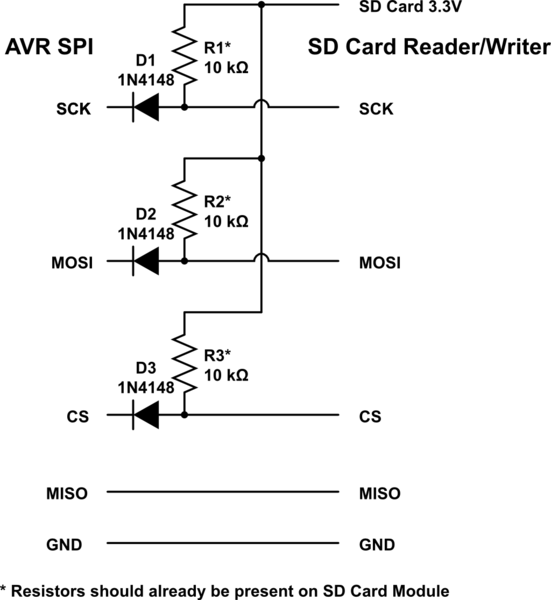So, here's the scenario:
I have an Arduino and an SD card. Unfortunately, I don't have one of the fancy shields, and I don't have the time to order one. As we know, Arduinos run on 5V, and SD cards run on 3.3V. I was thinking that I could use a series of voltage dividers to get the data going from the Arduino to the card (MOSI, Clock, SS) down to the correct voltage, but I'm not sure about putting together a step-up circuit.
Would I even need a step-up circuit for the MISO line, or could I just feed it directly into the Arduino? Does anyone have any ideas other than the ones I mentioned?

